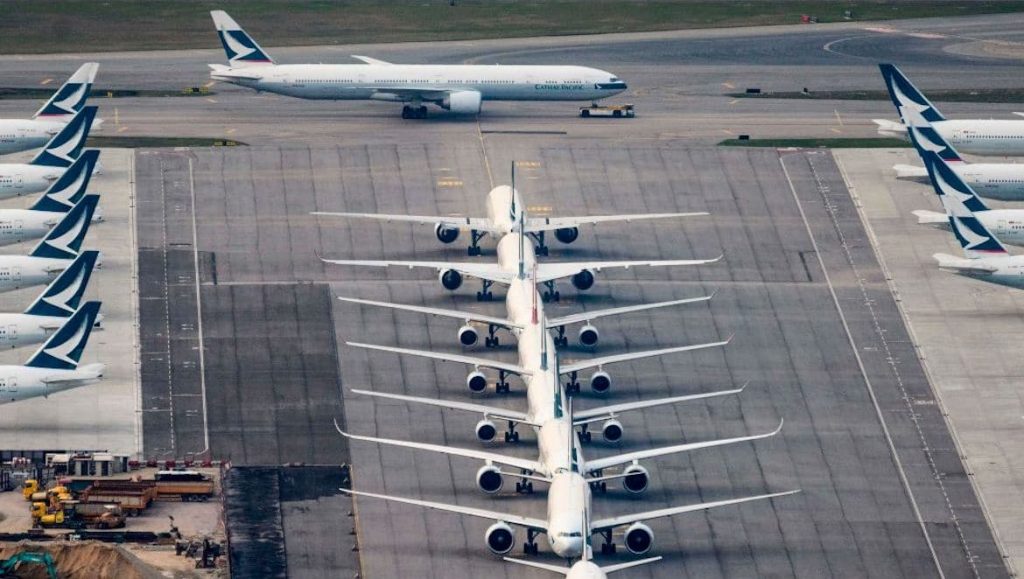
Hong Kong’s Cathay Pacific has announced it will retire 34 of its aircraft early, as nearly half of its fleet now sits in long-term storage in Australia and Spain.
In its 2020 full-year financial results, Cathay group chairman Patrick Healy stated that the airline how has 92 of its aircraft – around 46 per cent of its fleet – in long-term storage facilities in Alice Springs, Australia, and Ciudad Real, Spain.
The figure is up from the airline’s previous announcement in September 2020, that it had moved 40 per cent of its fleet into long-term overseas storage for the “foreseeable future”, in order for Cathay “to survive and thrive” in the near term.
While Cathay did not specify which aircraft it intends to prematurely retire, it did note that they were all “unlikely to re-enter meaningful economic service again before they retire or are returned to lessors”, which likely suggests the planes could be Airbus A330s or Boeing 777s, which are among the oldest aircraft in the airline’s fleet.
The group, which saw a record $2.8 billion full-year loss, also restated an earlier announcement of aircraft delivery deferrals.
Deliveries for Airbus A350-900 and -1000 aircraft have been pushed back by up to two years, from 2020-2021 to 2020-2023. Similarly, deliveries for A321neos — some of which were originally meant for now-shuttered regional wing Cathay Dragon — were delayed from 2020-2023 to 2020-2025.
Cathay stated that “advanced negotiations” are still ongoing with Boeing for the deferral of the 777-9 widebody, of which it has 21 on order.
The group had previously confirmed that the deliveries would be delayed beyond 2025 and said it was still committed to the type.
The group, which also comprises low-cost unit HK Express and cargo subsidiary Air Hong Kong, ended the year with 239 aircraft in its fleet, an increase of three aircraft from what it started the year with.
Passenger revenues continue to sit at just 2-3 per cent of pre-pandemic levels.
Analysts have previously warned that airlines like Cathay Pacific and Singapore Airlines will take far longer to recover from the crisis than most, as they have no domestic network to rely upon until international conditions improve.
Additional reporting by Airlinerwatch.










